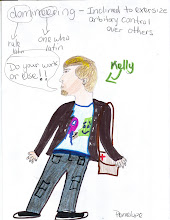“When an unconfident young woman is cursed with an old body by a spiteful witch, her only chance of breaking the spell lies with a self-indulgent yet insecure young wizard and his companions in his legged, walking home.”
Howl’s Moving Castle is,
as expected by now, an incredibly beautiful film—Miyazaki’s name isn’t
frequently preceded by “Master Animator” for no reason, after all—but Howl feels like a different kind of
beauty, because of how much density is in each frame. The interiors of Howl’s
castle, which moves, are packed with so much clutter, they look about ready to
explode. They are, in fact, so dense, it can be easy to get lost in them. This
seems borne out by many viewers’ sentiments toward the film—you see a lot of variants
on the aesthetic pleasures of the visuals (which are, indeed, bountiful), and
lots of off-handed mentions of “pet themes,” his antipathy for war in
particular. And indeed, thematically Howl
isn’t a radical departure, but at the same time,
Howl
is about transformation. At first glance, that’s not exactly out of the pet
theme house—after all, they’re all over Spirited
Away, and Porco’s mysterious transmogrification is central to his film. But in Howl,
transformations, how they happen, how they are reversed, how they are
forestalled are central concerns of the film.
Transformations often seem to be
manifestations of a character’s internal state, and also a metaphor for the
abrupt alterations that must necessarily be made to that internal state by
outside circumstance, especially when that outside circumstance is conflict and
war. Howl is at will able to reshape himself into a dangerous, however useful
beast, but he clearly fears finding himself unable to change back, a state he
notes his fellow wizards have placed themselves in. Sophie isn’t quite so lucky—her
curse is inflicted on her, and she’s only able to transform back to her
youthful self in fleeting moments, and she often isn’t even aware it is
happening.
In the end, however, Sophie isn’t able
to undo all of her cursed transformation. She does, however, undo most of it.
And this is a marked development from Porco—in Howl, while we are shaped, as we must be, by events, we are able to
hold onto our selves through them.


No comments:
Post a Comment